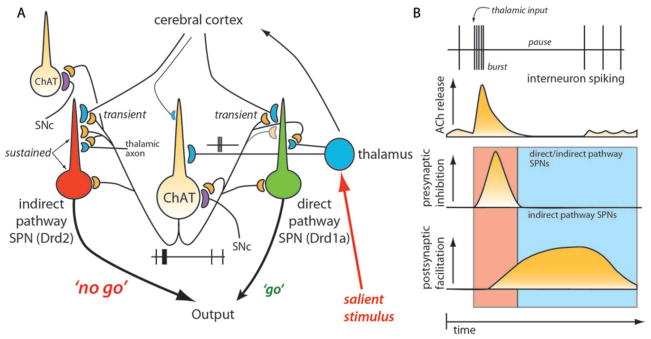FIGURE 4.
Thalamic Gating of Glutamatergic Signaling in the Striatum (A) Schematic illustration of cortico- and thalamostriatal glutamatergic projections. Both direct and indirect pathway SPNs receive glutamatergic afferents from the cortex and the thalamus. However, cholinergic interneuron receives glutamatergic inputs primarily from the thalamus. (B) Thalamic inputs efficiently drive cholinergic interneuron and generate a burst-pause firing pattern. By acting at presynaptic M2-class receptors, acetylcholine release transiently suppresses release probability at corticostriatal synapses formed on both direct and indirect pathway SPNs. By acting at postsynaptic M1 receptors, acetylcholine release primarily enhances the responsiveness of D2 SPNs to corticostriatal input for about a second. The pause in cholinergic interneuron activity ensures that there is not a concomitant presynaptic suppression in this window. Thalamic stimulation should activate neighboring cholinergic interneurons as well. The pause is generated in part by recurrent collateral or neighboring interneuron activation of nicotinic receptors on dopaminergic terminals. In this way, the burst of thalamic spikes engages cholinergic interneurons to transiently suppress cortical drive of striatal circuits and then create a second long period in which the striatal network is strongly biased toward cortical activation of D2 SPNs. From Ding et al. (2010).

